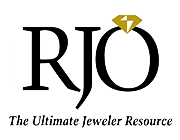It’s a busy Saturday afternoon in the store when in walks this young couple, hand-in-hand, and make their way back to the Bridal area. As they begin to examine the merchandise there, the salesperson approaches and asks the first of what will be a series of questions hopefully leading ultimately toward another Bridal sale. The chances of successfully closing a sale in this situation are greatly improved if the entire process can be made easier, smoother and made to flow more seamlessly. The unfortunate truth is, often times, the arrangement of the displays and merchandise in the Bridal department of many retail jewellery locations are not helpful to this success, and in fact, it impedes the flow. The reason in many instances is because the retailer tends to organize his showcases by his own mindset instead of his customers. “These rings are all from manufacturer X so they all go together here and those are from Y so they go there.” Arranging the merchandise in a manner to follow the decision making process of the client (instead of the shop owner!) has proven to generate a smoother selling process and therefore more and larger sales.
We should keep in mind that the role of the salesperson, (and the store displays) is to help the client move through the process of choosing their item for purchase. The client starts with a store full of merchandise and they must move from a store full to a specific showcase, then to an area of that case, then to a tray of possibles and finally to the one they choose to buy. The process is one of elimination because the client must eliminate all but one in order to buy. Clients buy nothing when they cannot decide on one. The salesperson and the display are there to get the decision down to “the one.”
It might serve the jeweller well to think of the displays in the Bridal department of their store in much the same way as they see the workbench used by one of the jewellers in the back shop. At the bench, all the most commonly used tools are arranged in easy reach, organized and ready. The area is designed for efficiency and easy flow in order to save time and improve workflow. The Bridal showcases are the “workbench” of your sales team. It is undoubtedly inefficient (and certainly confusing) to have a salesperson and a client be forced to move all around the store as the discussion evolves looking for “the one.”
In order to reduce this “sales workbench” confusion, begin by analyzing your sales teams “most typical” diamond sales presentations. You will likely find that the discussions often follow a common path. What questions do you ask of a new client? What questions does the client ask? How often do clients enter your store asking for a specific name brand? How often do they know exactly what they want as a result of previous homework done on-line or outside your store? How often are they ”just starting to look? ” Take all the answers to these questions and ask yourself how the department might be physically better organized to make the process flow more smoothly. Do not focus on who made what in your cases; look at the cases through the customer’s eyes.
How would this approach look in the store?
Most subscribers to this display approach find that the cases work better when organized by style of ring. This results from the agreement that the most commonly asked “first question” of new clients is “Do you have a particular Style of ring in mind?” Most brides have some idea of the type of ring they want. Given the different descriptive words being used to differentiate ring styles, many jewellers have put together a small tray with a sample ring (often alloy) of each of the most popular styles to show what is meant by the different styles. The client then sees what is meant by words such as “Classic or Vintage” The most common shown styles are Classic, Vintage, Halo, Three Stone and Sidestones.
Assuming these styles are correct, the cases are then organized by style, with all the Halo rings being grouped together in a given showcase in an organized manner. The logic for this is simple, the client has told us where her interest lies and we can now take her to the case(s) with all our Halo merchandise in easy reach and open to her examination. In a sense, the non-Halo Bridal merchandise is now immaterial and needs to not distract her from her choice. (We have begun the process of elimination.) Within that “Halo” case, we might group the rings by designer, by sub-style, by price point or other characteristic. The choice for the further organization of this case is dictated by the most common next question our salesperson asks. This could be metal color, diamond shape, single or double halo, etc. Once the rings are arranged in trays according to this next characteristic, the trays should be arranged by Good-Better-Best. Place the “Good” trays nearer the front of the showcase, the “Better” merchandise at mid-case and the “Best”, nearer the salespersons side (back) of the case. The back of the case is the “sweet spot” where the customer’s eye goes first, so take advantage of the eye-traffic and emphasize the best.
The result is a case with all our Halo goods, sub organized by metal type and diamond shape, then arranged in a good, better, best arrangement. The client sees our selection of her preferences in an easy-to-shop manner and the need for excess movement is eliminated. The salesperson can speak to the selling points of all the selection and move the customer up or down as the sale progresses.
We find the only exception to this organization plan concerns well-known branded rings which are displayed by brand. If you have clients walking in the door asking for “X brand” rings by name, those rings should be in distinctive displays to make the process of finding them easier. If you find you have a significant number of clients asking for a specific Bridal brand (such as Tacori tm or Hearts on Fire tm), that line should be displayed separately and always in vendor-provided brand-distinctive displays with their signage and graphics. You’ll also want to use any vendor provided display that communicates a selling attribute or benefit that you cannot do in your own store display. Always remember to make it easy for your customers to find the object of their interest.
Consider placing brands that are lesser known or not specifically requested by name in your own store displays. The client for these lesser-known brands is in your store because of your store brand. Use a sign that says “ABC brand by Acme Jewellers” if you want to promote their name, instead of using their display. Using your own store displays also has the added benefit of making it easier to organize your inventory by logical groupings.
A word here about the sales approach to avoid confusion…If you ask your sales team members, you’ll likely find there are some similarities between the actual questions asked of clients and their sequence in the selling process. The co-ordination of the selling process among the store’s salespeople makes it much easier to organize the cases in a manner that makes selling more effective. It is easier if all salespeople use a similar question sequence since the cases will be arranged this way. This does not mean, the sales presentations are identical (no memorized scripts or other canned presentations). It does mean that the entire sales staff uses their own words but follows an agreed-to sequence that allows them to go directly to the part of the case that holds the merchandise being requested by the client.
As with any new display arrangement, it is important to try different approaches, setups, layouts and strategies, track the response from the clients, adjust and retry. Successful displays are ones that sell jewelry. Period. You’ll never know what really is effective without a record keeping system that tracks how different approaches have performed. Do more of what works and less of what doesn’t.
The marketplace for Bridal merchandise is a rapidly changing landscape. New products, new trends, new competitors, new ideas, come along almost every month. For retailers to expect success using the same old displays and strategies of years past is handicapping your own success. Rethink how you are selling. Look inside the mindset of your client for inspiration on how to make your sales grow. Make it easier for them and they will reward you with their purchases.




